New Gantt museum exhibition focuses on the surreal sides and shapes of Black art
- Oops!Something went wrong.Please try again later.
One of the highlights of the new arts season already is unfolding at The Harvey B. Gantt Center for African-American Arts + Culture.
The Gantt’s second biennial recently debuted at the uptown museum and runs through Jan. 15. “my Presence is Present: interpretations of afrosurrealism from the American South” is curated by local artist Carla Aaron-Lopez.
.The show features 21 regional artists. Not only do the works evoke the “other-worldliness” typical of surrealism, they also capture a distinct regional perspective that signifies the South.
Pieces like Kevin “Surf” Mitchell’s buoyant photograph of a “High Jumper” at Lake Norman, and Clarence Heyward’s “God is Dope,” a portrait featuring a shirt from the iconic Atlanta brand of the same name filtered through a Chroma Key green, reference the South via their backdrops and cultural touch points.
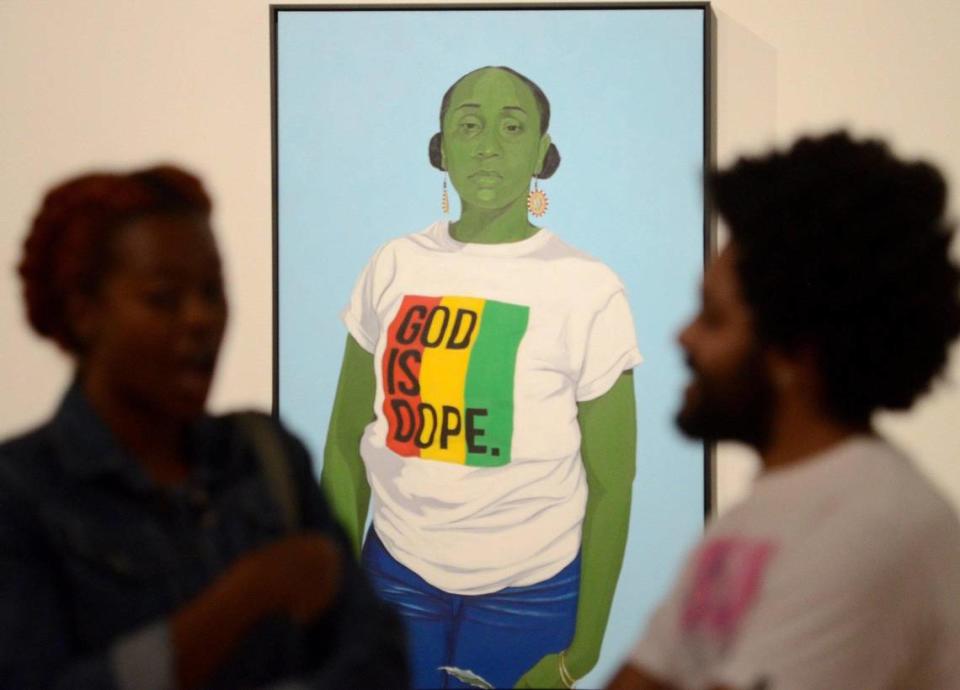
As the Gantt stated online about its exhibit, “As the importance of Black history is being challenged in certain sectors, the second biennial, my Presence is Present, carries the mantle of Black excellence and evolution in art and culture.”
Through the installation, multidisciplinary artist Aaron-Lopez seeks to tell a larger story of the Black Experience across space and time — but one that’s anchored in the here and now.
Some of the artists, she said, are documenting “just being.” The resulting pastiche is a kinetic assemblage of the artists’ narrative points of view, not unlike the curator’s own collage work.
The mixed media that are showcased include oil paintings, photography, film and 3D objects — all of which depict joy, pain, incongruity and absurdity — in short, the full depth of human experience.
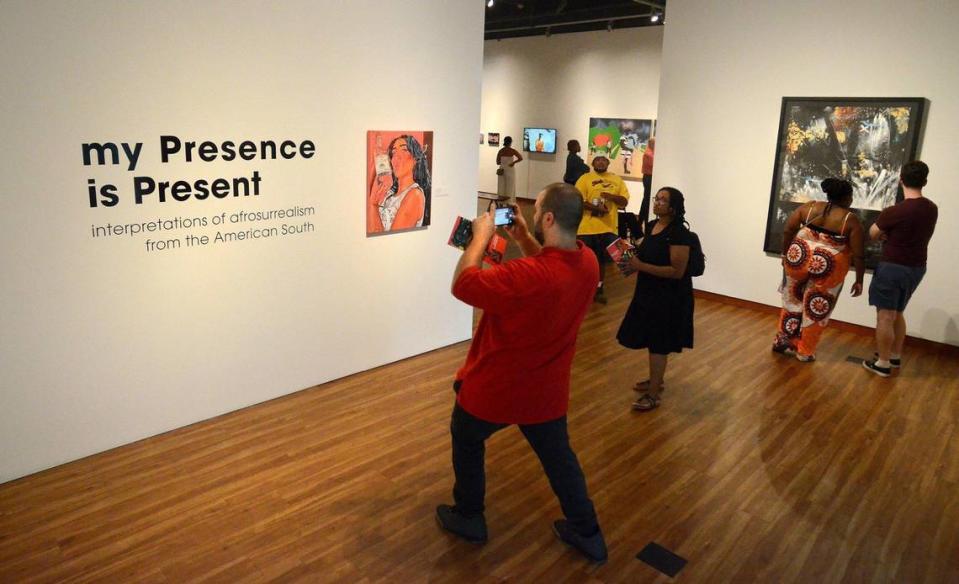
What is Afro-surrealism?
Though the concept dates back to the early 20th century, the term Afro-surrealism was coined by writer and intellectual Amiri Baraka in 1974.
For Baraka, it was a way to catalog work that featured a mix of Black-centered themes alongside surrealism. By emphasizing the fantastic or absurd elements of life through the use of color, metaphor or elements that may seem illogical on the surface, this practice is a way of making the invisible visible.
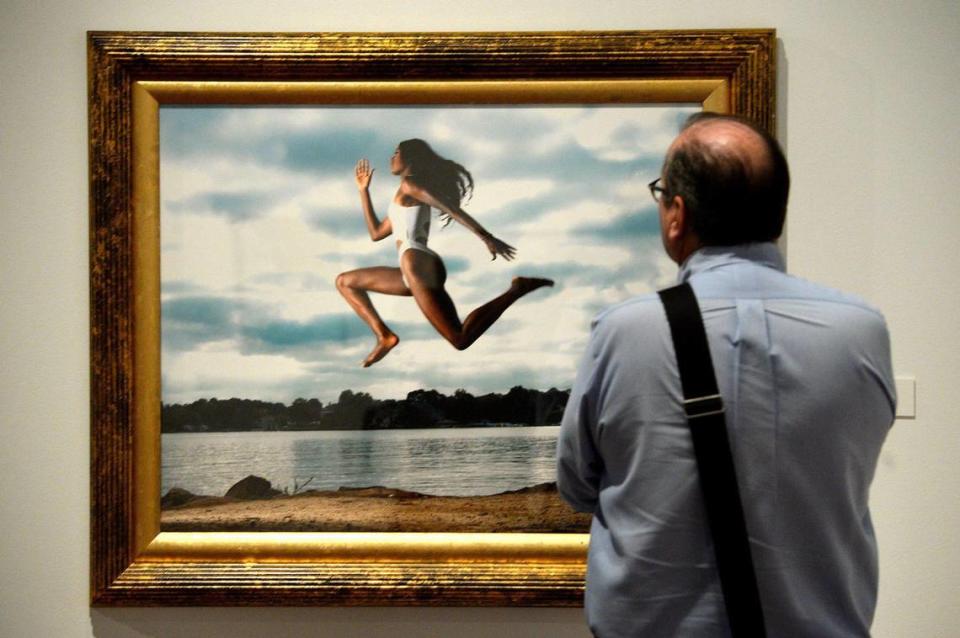
While Afro-surrealism is a through line that unifies the Gantt exhibition, the importance of representation is also a common denominator.
In Ariel Dannielle’s whimsical “Fresh Set,” for instance, the artist’s colorful canvas foregrounds the likeness of a woman’s crossed hands bearing a new set of elaborately decorated nails.
But a closer look reveals scenes from the anime series “Sailor Moon” in miniature on each nail. Inclusion of this detail says something about the subject — she’s intentionally making her interests known, even if that interest may not be seen as traditionally Black or feminine.
In doing so, the painting offers a counter narrative to anyone that might dare define the painting’s subject by a stereotype.
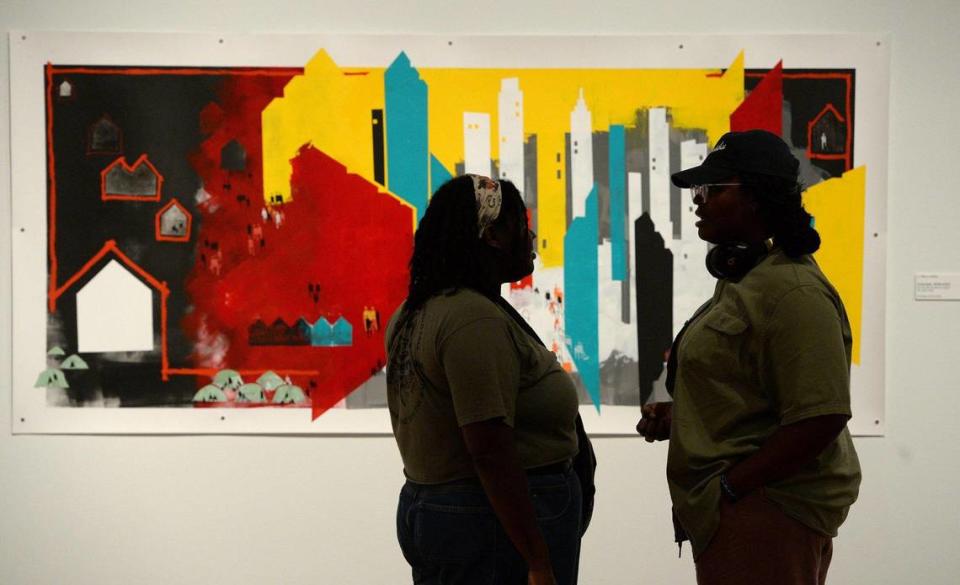
The medium is the message
UNC Charlotte-trained artist Kalin Devone, who is working on a large-scale mural in Durham for the Southern Coalition for Social Justice, has two paintings in the Gantt show. Her work, a study in color and technical execution of light and shading, also shines a spotlight on the quotidian.
One piece, “Many Miles” depicts a male friend in repose, relaxing and reading a book in a balloon-festooned room. Another, “Carla’s Feet,” is a still life focused on the subject’s sneakers and a character study of a woman at rest.
All of the works in the exhibition are layered.
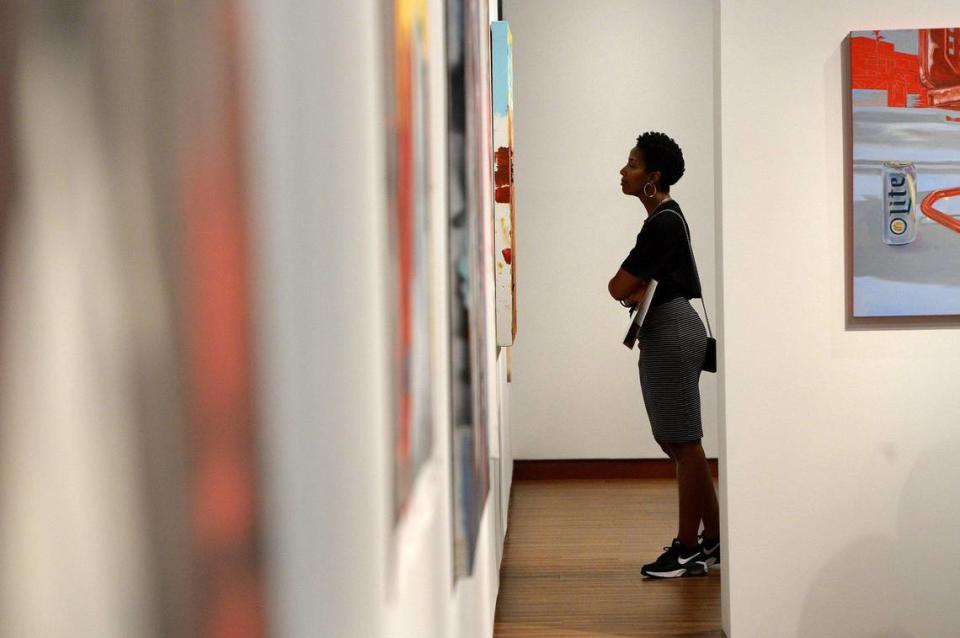
That includes physical texture, as in Așa Jackson’s “Darkness Upon the Face of the Deep,” or through the layered visual metaphors in Roscoe Hall’s “Not No-mo.” That depicts a well-defined male against a rural landscape and offers a comment on gentrification even in non-urban communities.
Some artists work with objects and materials that hold special significance to the Black community.
Rashaun Rucker’s oversized church fan, for instance, features photos of Omega Psi Phi Fraternity members joyfully strolling during a picnic, epitomizing their motto, “friendship is essential to the soul.”
Charlotte artist pushes boundaries with her sculpture. And a flamethrower.
And Nadia Meadows has an arresting installation. “Nadia and her Chair” offers a three-dimensional chair created with Black hair. It’s a medium, Aaron-Lopez said, “that is, in itself, very political.”
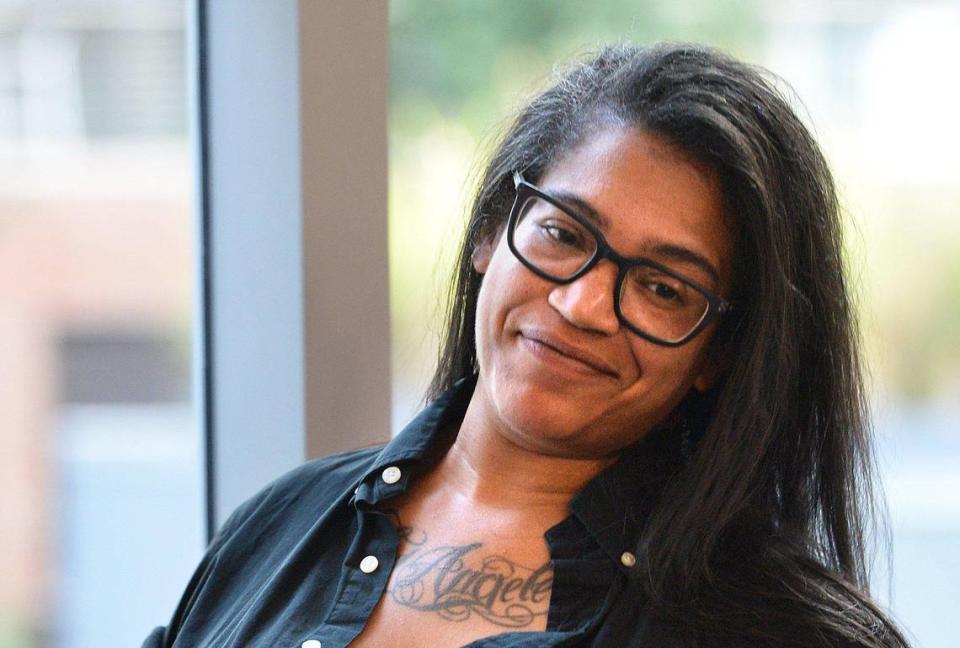
The many influences of art at the Gantt
The show has references to the past as well as the present.
One look at William Downs’ painting “You Give Your Body Back When You Go Away” recalls the work of Caravaggio and Dali. Downs’ work also offers a reflection on contemporary mental health through evocative black and white images with an ink painting technique that is one of the hallmarks of his work.
Rock Hill native and University of South Carolina alum Garrison Gist cites a range of artistic influences, including DC Comics’ Jim Lee, street artist Shepard Fairey and Disney Studios. His piece, “The Underlying Beauty,” presents eye-popping color with pink hair and blue eyes.
Nearly a century ago, Walter Benjamin wrote his seminal 1935 essay, “The Work of Art in the Age of Mechanical Reproduction,” where he wondered about the future of art in an era where images and icons could be replicated and mass produced. And in our current moment, cultural anxieties swirl around the future of artificial intelligence.
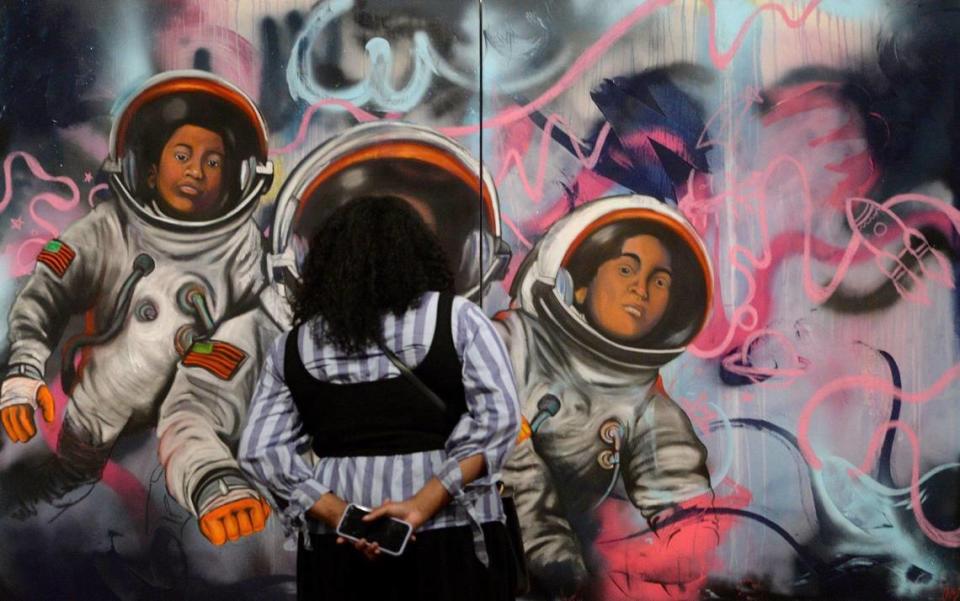
Through Aaron-Lopez’s exhibition, concerns about technology interfering with creative production is considered and tempered in the hands of people like Dammit Wesley. The Charlotte artist uses AI-powered Midjourney as a drafting tool to create reference “blueprints” for analog works like the vibrant “Citrus Olympia.”
Aaron-Lopez’s inclusion of such pieces reveals her forward-thinking as a curator, not surprising to those who know her commitment to teaching and mentoring the next generation of artists. “If a work of art makes me ask questions, it has done its job,” Aaron-Lopez said.
And what does she hope that visitors take away from her show?
“A reminder that we — Black people — are a colorful people with so many varied stories. It’s not just one story.”
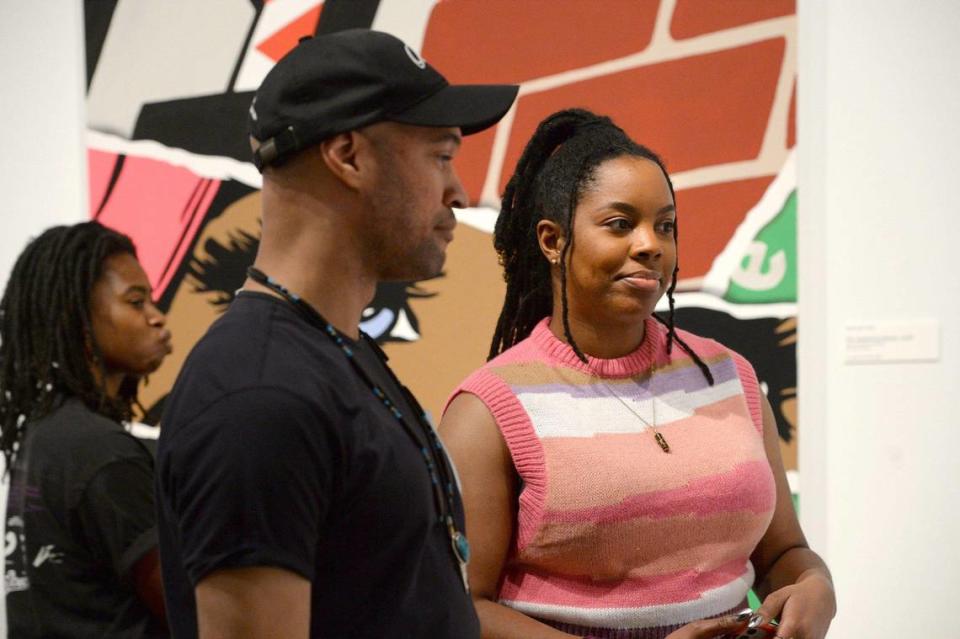
More arts coverage
Want to see more stories like this? Sign up here for our free “Inside Charlotte Arts” newsletter: charlotteobserver.com/newsletters. You can join our Facebook group, “Inside Charlotte Arts,” by going here: facebook.com/groups/insidecharlottearts. And all of our Fall Arts Guide 2023 stories are here: charlotteobserver.com/topics/charlotte-fall-arts-guide

